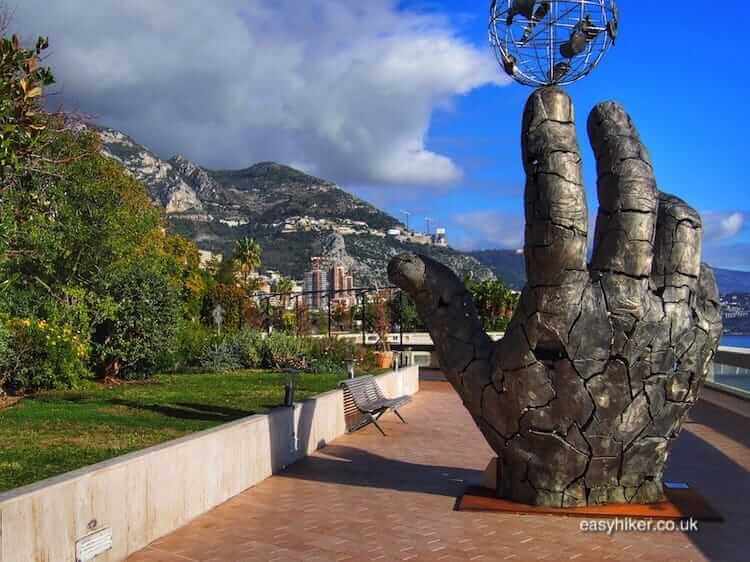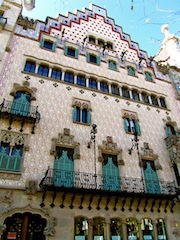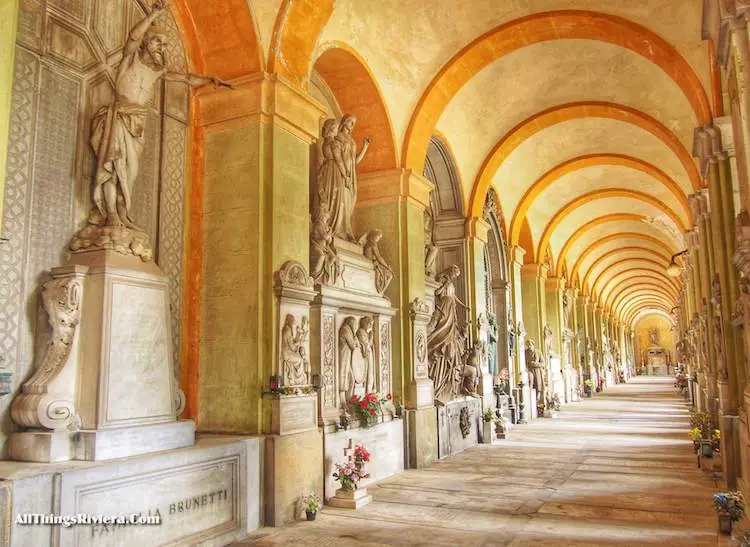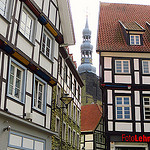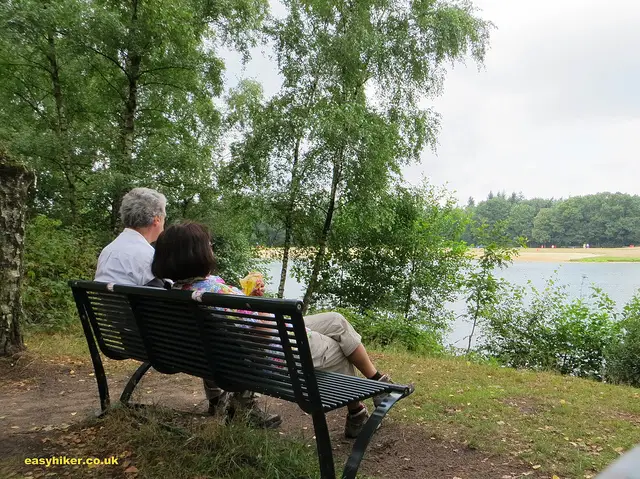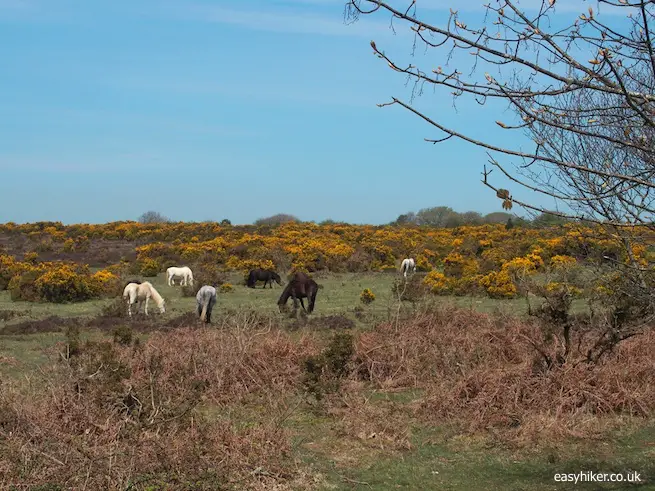The cities of Calabria rank low on the list of Italy’s travel destinations. Few people would choose Reggio di Calabria or Catanzaro as a base for their tour of the region in the same way that they would structure a trip to Sicily around extended visits of Palermo or Catania.
Which is why we approached our stay in Cosenza with mixed feelings. Had we booked wisely – and would there be enough to entertain us for the three full days we had reserved for our visit of the town?
In the end, it turned out, we need not have worried: there was the historic interest, of course (the mystery of Alaric’s grave and the ghosts of his Visigoth warriors), and the old town proved as interesting as we had expected.
What caught us by surprise, however, was the Corso Mazzini, Cosenza’s high street, which leads a double life.
In the evenings, this is where the nightly spectacle of the passeggiata unfolds, provincial Italy’s ritual of taking the entire family out for a stroll and a series of chats with people they run into …
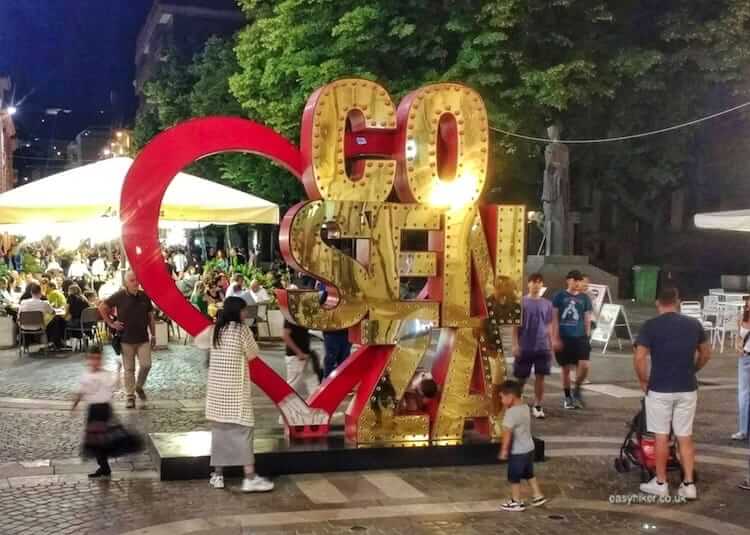
… while in the bright sunshine of the daylight hours, the street sizzles as one of Italy’s most fascinating Open Air Museums.
On show are more than 20 sculptures by famous modern artists such as Salvador Dali …
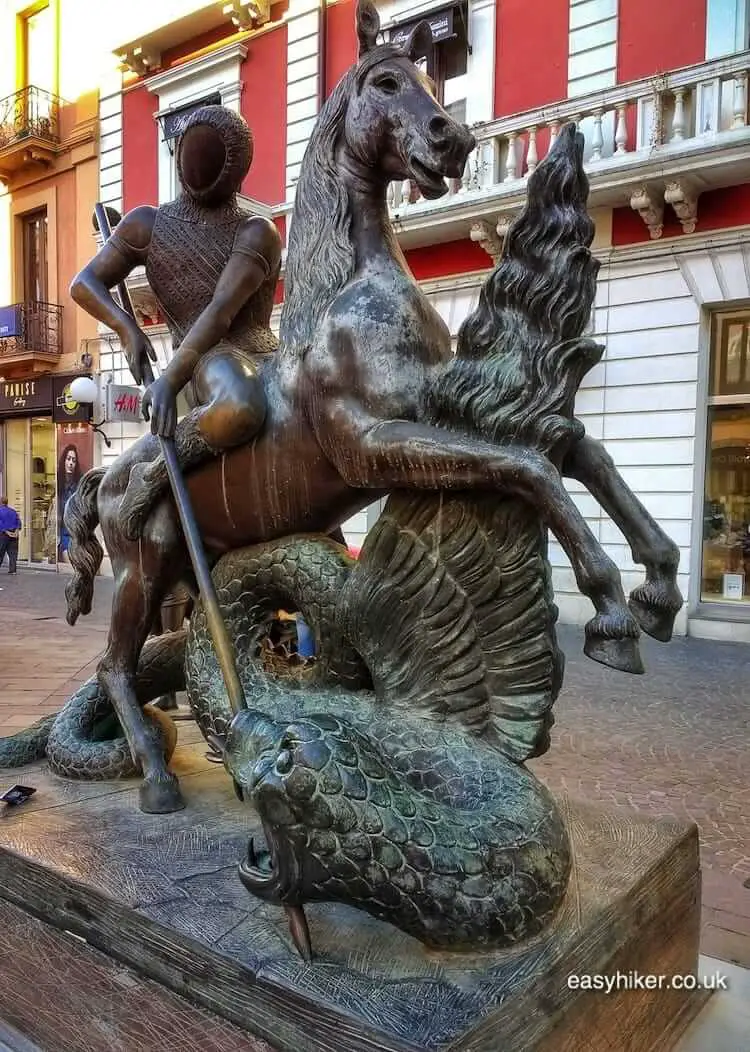
… and Amadeo Modigliani …

… whose Caryatid also happens to be the only of his large bronze sculptures on display anywhere in Italy. Which is not something you would necessarily expect to find in a provincial town near the toes of the Italian boot.
So how did all these works find their way into the high street of Cosenza?
The open air museum of Cosenza was the brainchild of Carlo Bilotti, who grew up in the town as the scion of an aristocratic family but who, as a young adult, rather than enjoying the privileges of a provincial nobleman, decided – like so many Calabrians before him – to look for fame and fortune across the Atlantic in the USA.
Eventually, he found what he was looking for: fortune as a successful entrepreneur in the cosmetics industry and fame as an influential patron and collector in the New York art world, the friend of world-famous artists such as Roy Lichtenstein and Andy Warhol.
After his death in 2006, two Carlo Bilotti museums were established to house his extensive collection: while his paintings went to Rome into the Villa Borghese, his sculptures were shipped to the town of his birth – where the unusual step was taken to display the works on the high street so that they could be enjoyed not just by art lovers who made the pilgrimage to a dedicated museum.
And so that, in the process, these works would become an integral part of the cityscape.
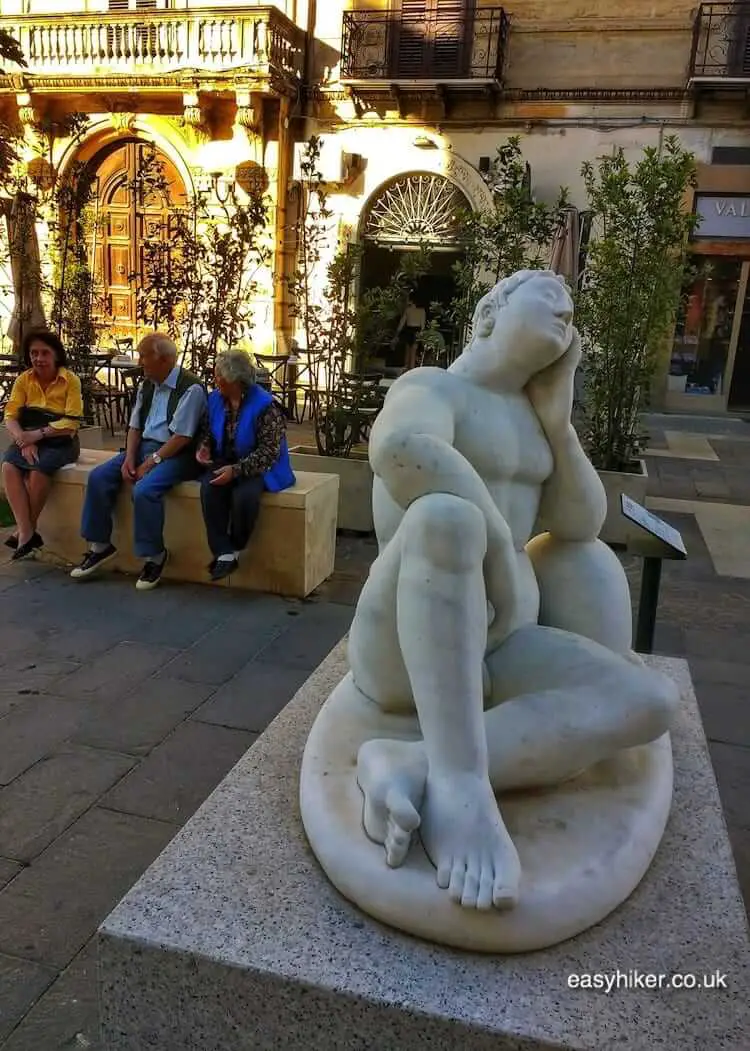
Start your tour of the open air museum of Cosenza under the large Pietro Consagra statue on Piazza Carlo Bilotti.
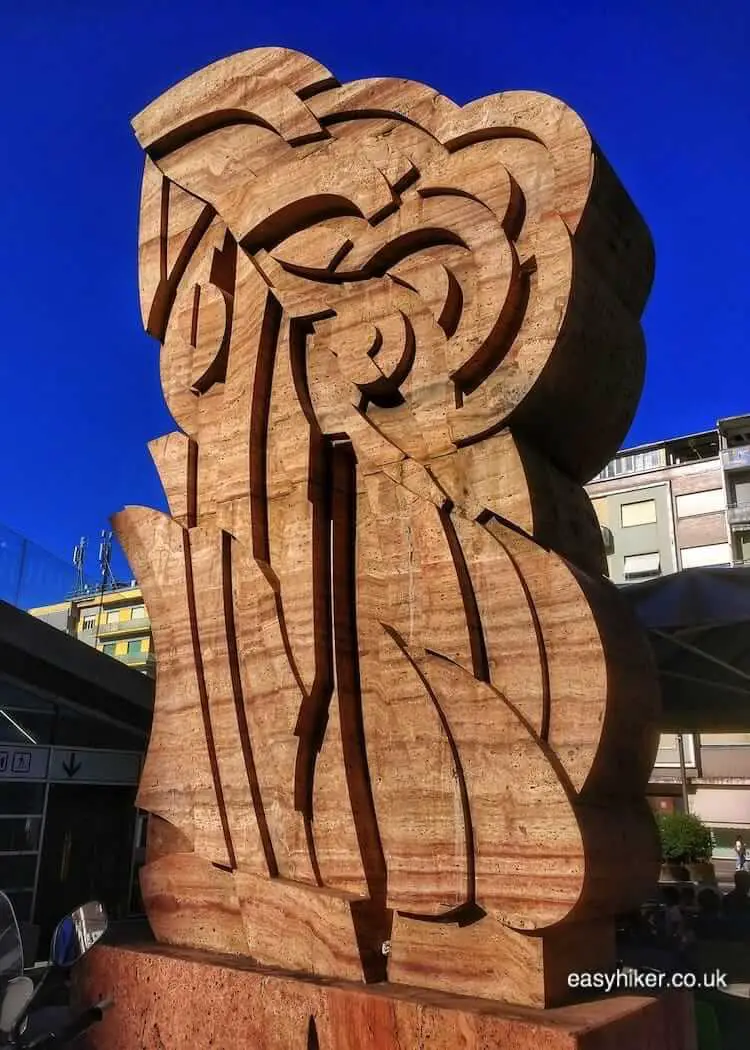
Now turn into Corso Mazzini. Over the street’s entire length of just under 1 km, you will be able to familiarize yourself with works by some of the finest 20th century artists – and rarely walk 50 metres without spotting something interesting …
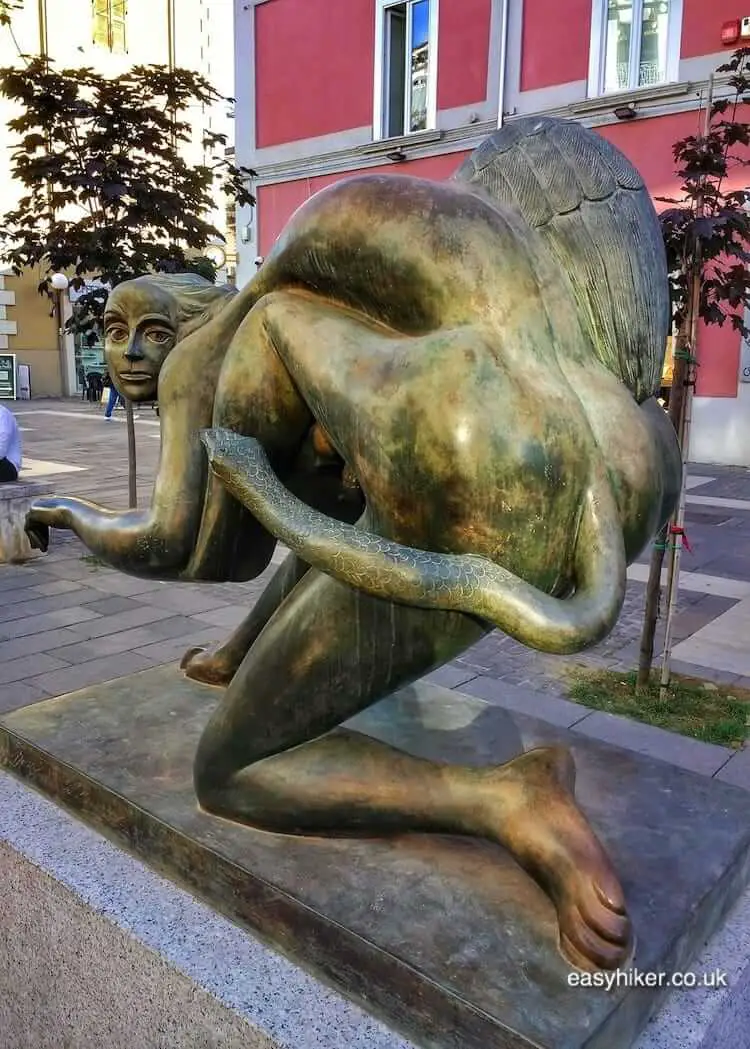
… or challenging.
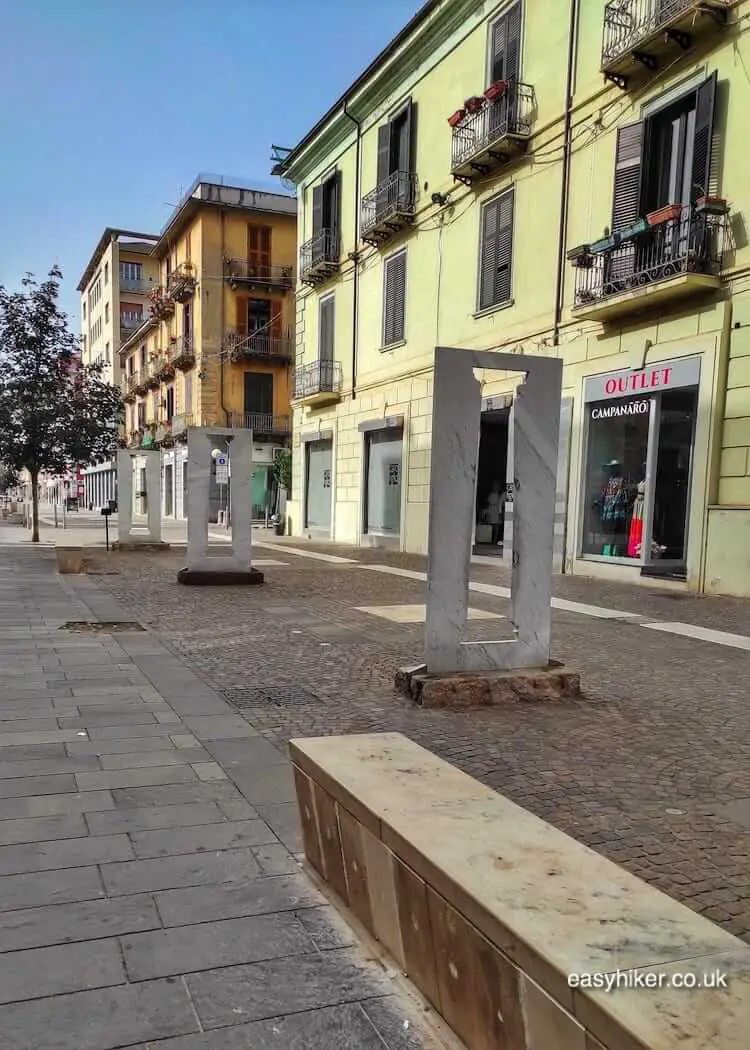
Most of the sculptures are standalone pieces like the Head of the Medusa by Giacomo Manzù, who is mainly known for his religious art works (which include the Door of Death in the Vatican’s Saint Peter’s Basilica).
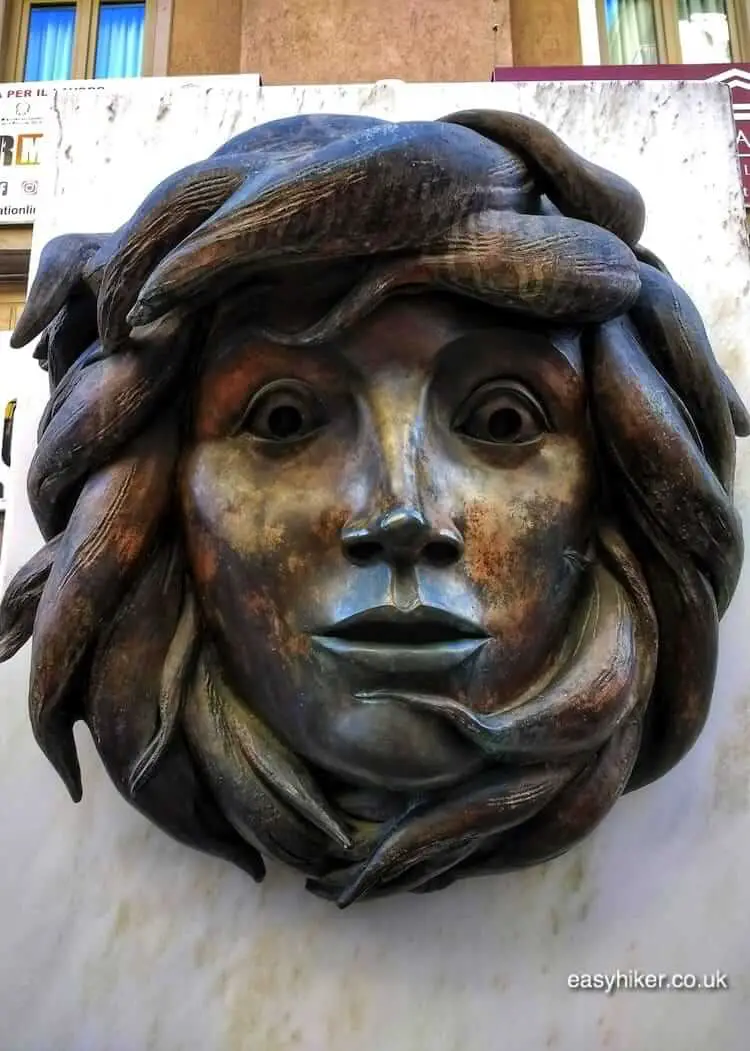
But some are also arranged in groups – like the female figures by Emilio Greco …
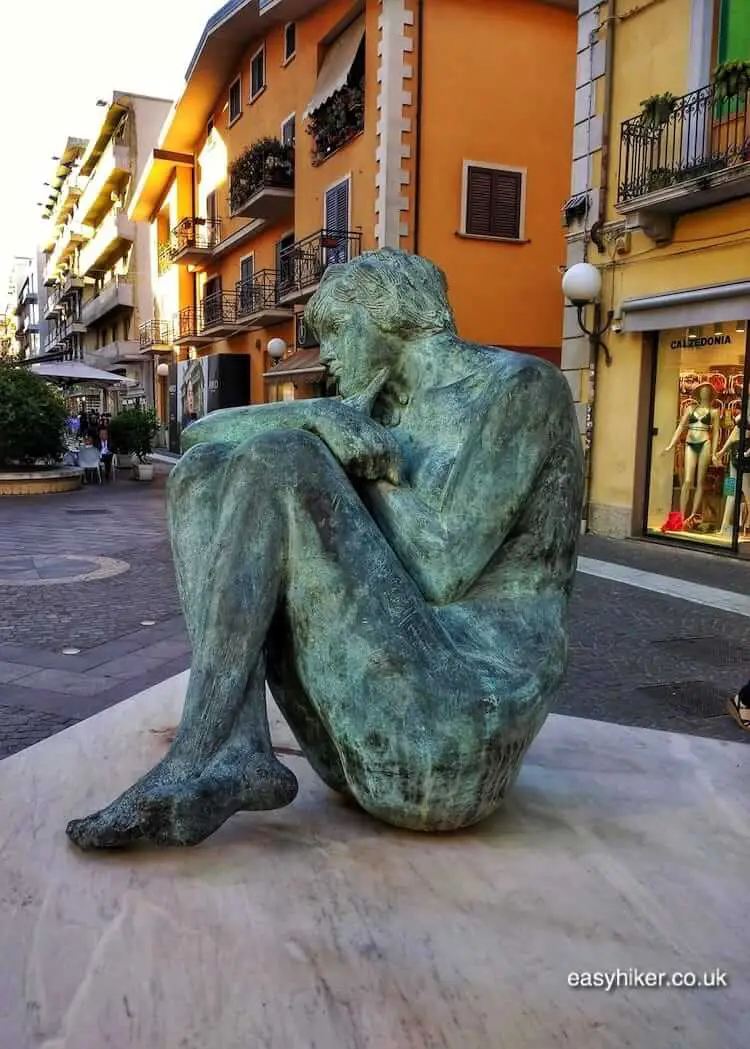
… that echo one another in gestures and shapes.
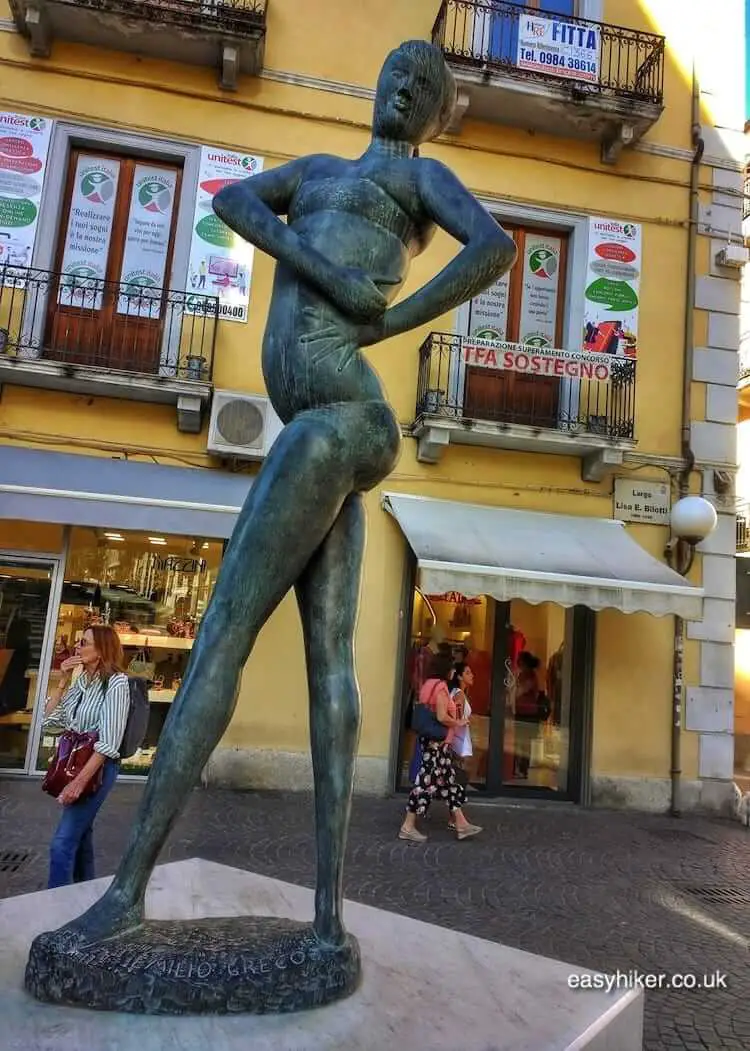
Other groups of sculptures provide interesting contrasts of narrative and style. On one end of Piazza Kennedy, for example, you can spot the Wolf of the Sila (the Sila is the name of Calabria’s mountainous wilderness), the final work of Mimmo Rotella who gained fame as one of the leading artists in the New Realism movement alongside Yves Klein and Christo, the man who would later wrap up the Reichstag. (Rotella died before he could see his Wolf standing in Cosenza).
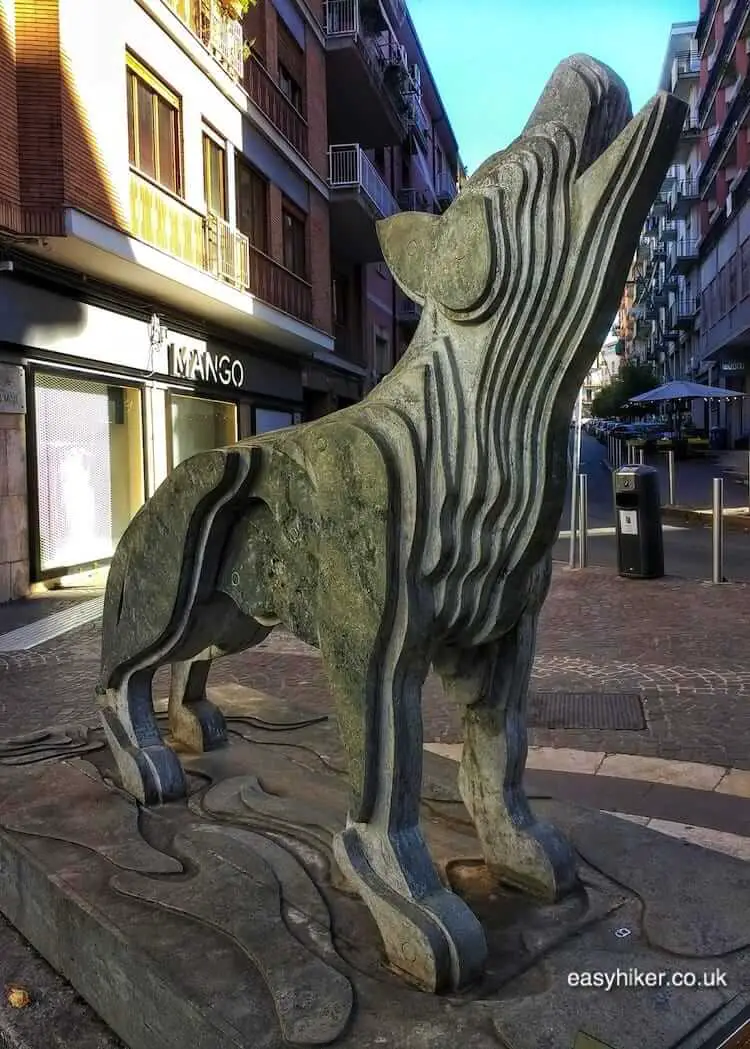
On the Piazza’s other side, meanwhile, death-bound Hector bids a final farewell to Andromache, his beloved wife, before facing his nemesis, the Greek warrior Achilles, in the final battle for Troy.
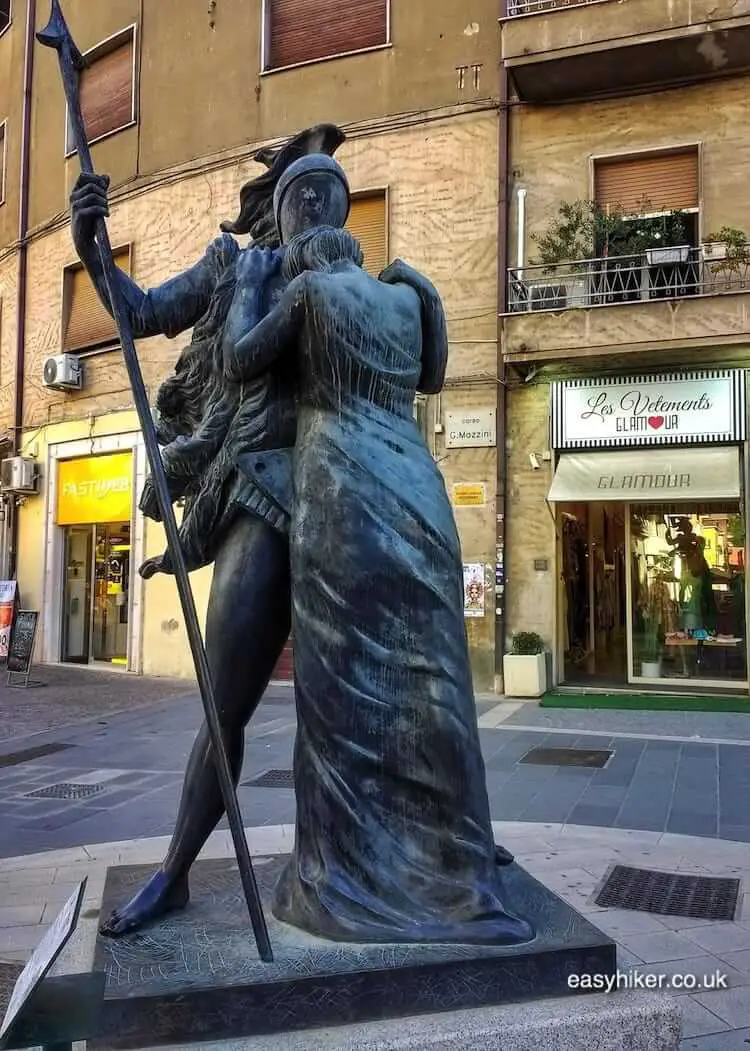
This moving illustration of a key moment from the Iliad was created by Giorgio de Chirico, an early 20th century artist who is best known for his proto-surrealist paintings of Italianate townscapes in the fading afternoon sunlight. (David Bowie, apparently, was a fan of his and occasionally used the artist’s work as inspiration for album covers and music videos.)
De Chirico was one of Bilotti’s closest friends in the art world, and many of his bronzes found their way into the open air museum of Cosenza through the good services of his widow.
Most of de Chirico’s sculptures come from the later stages of the artist’s career, but his Two Archaeologists …

… go back to his first experiments with the medium and a design he started to experiment with in the early 1940s.
The bronze sculpture stands near the entrance to the seat of the provincial government (the prefettura), next to Mimmo Rotella’s The Renaissance of Culture. This Rotella sculpture does not, strictly speaking, belong to the Bilotti museum since it was directly commissioned by the municipality.
Following the attack on the World Trade Center in New York in 2001, the city fathers wanted to emphasize the importance of culture and specifically of books as humanity’s strongest weapons against bloodshed and barbarity.
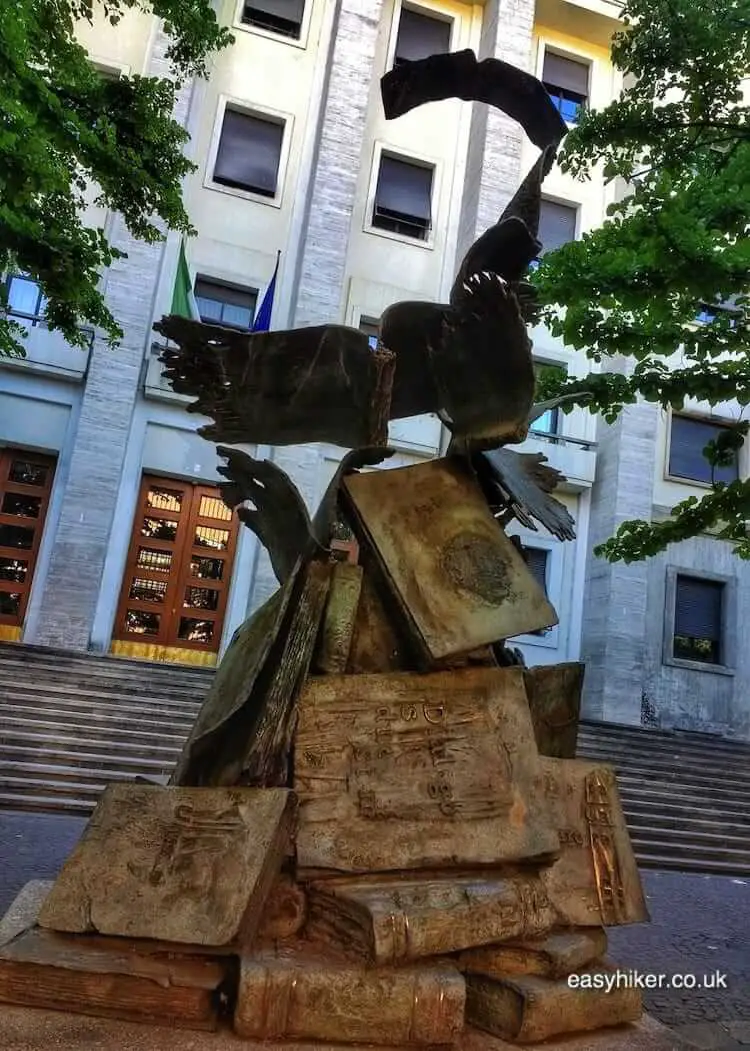
So here is our tip for your own trip to Calabria: make sure you do not miss Cosenza’s Corso Mazzini. Its two faces, busy high street and Open Air Museum, allow you to conduct a unique study of Italian art and life – and the often quite subtle way in which those two are intertwined. So subtle indeed that you sometimes may find it difficult to tell where one ends and the other begins.
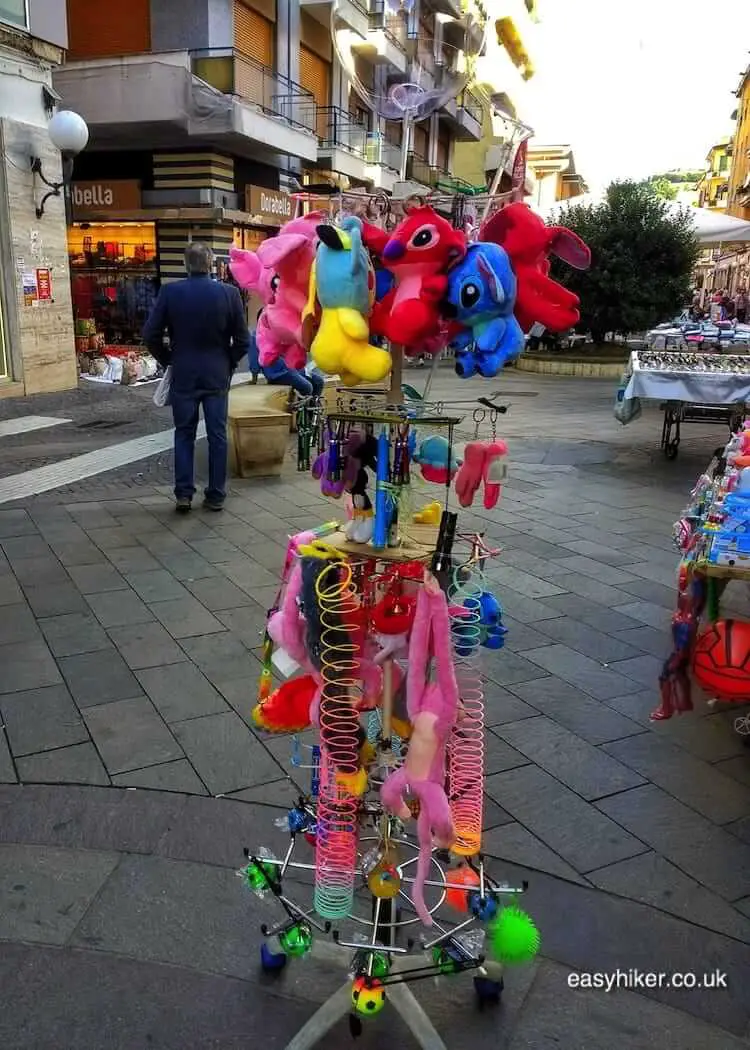
Perhaps the most widely known Italian sculpture of modern times also stands in Cosenza: it is called Unique Forms of Continuity in Space and was based on a design by the Calabrian-born Umberto Boccioni, the founder of the Futurist Movement in the 1930s.
Does it, by any chance, look a trifle familiar?
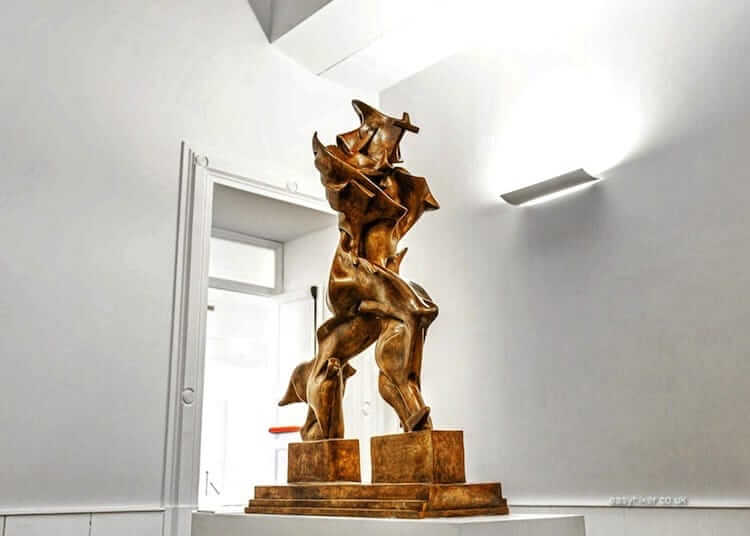
You have probably held a reproduction of the statue in your hands many times, most likely hundreds of times if you live in the Eurozone: an image of the sculpture graces the back of Italy’s 20-Euro-Cent coin. The original sculpture, while also a part of the Bilotti collection, is housed indoors in the Palazzo Arnone, the National Gallery of Cosenza.

